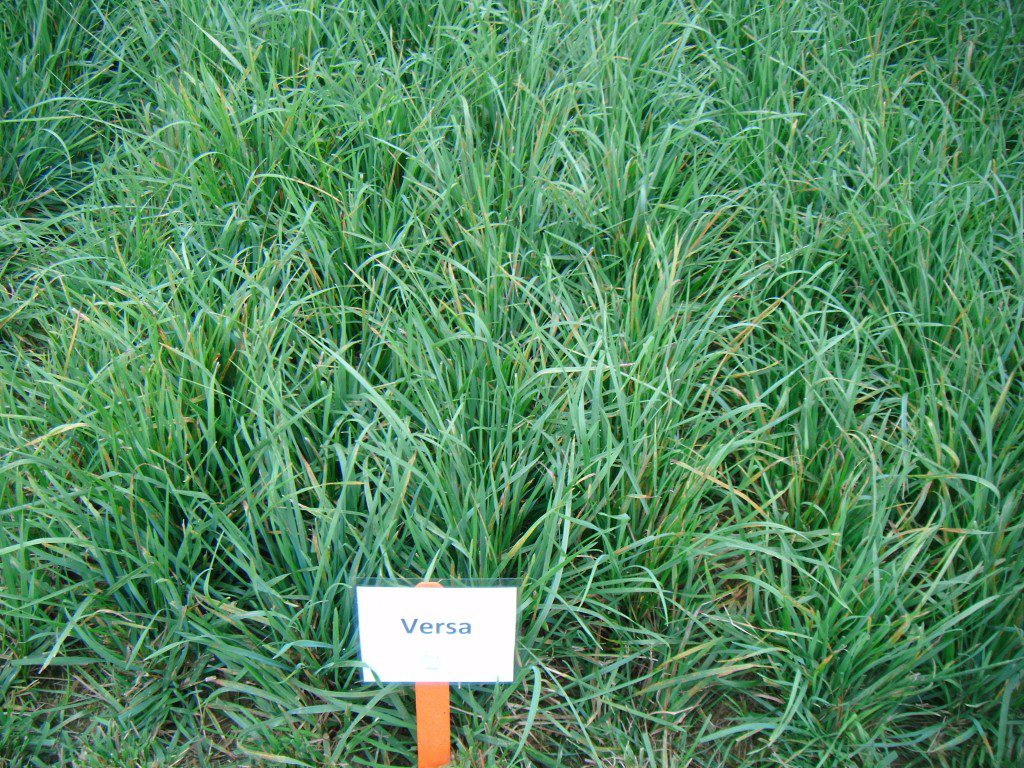
There were many reports last year of orchardgrass persistence problems. This may be attributable to several different factors, but a major cause was the wet year, especially early in the growing season, which led to fungal infestations in various crops.
In an effort to study this further and suggest disease resistant varieties across the Northeast and Mid-Atlantic, Gordon Jones, a grad student from Virginia Tech, is conducting a survey on orchardgrass disease problems. He asks to be notified of any stand persistence issues so he can survey these sites. We encourage you to participate if you or those you know have experienced this problem. See Gordon’s letter below and attached forms, available by clicking the links, for more information
At King’s we always advocate diversity in the crop rotation. Perennial stands with 2-5 species or varieties usually do better than straight stands, so if you are able to plant more than one variety of orchardgrass, this is preferable. Some varieties may be more susceptible than others, which will give resistant varieties an advantage under stress. Diversity is always good insurance against disease, pest and weed pressure.
Dear Orchardgrass Task Force, Extension agents, Professors, Industry members, Producers, and others,
I am a PhD student in Crop and Soil Environmental Sciences at Virginia Tech. I am working with Dr. Ben Tracy on understanding the causes of reduced persistence in orchardgrass hay stands around the region.
One component of my work is to survey orchardgrass stands in the hay-growing regions of Virginia, West Virginia, Maryland and Pennsylvania (See attached map). I would like to ask your help in finding orchardgrass stands to include in the survey.
It is my hope to be able to sample 30 to 50 fields across this region during and around my spring break, March 7-16. I will collect plant and soil samples, assess stand cover, and scout for insects and diseases. I will revisit these stands in August 2014, March 2015, and August 2015 to assess persistence. With a little bit of information from producers about their management practices, this survey should help to identify agronomic and ecological factors related to reduced orchardgrass persistence.
Right now, I’d like to generate a list of potential stands to include in the survey and collect some information from their producers. There are a variety of logistical challenges in terms a large area to cover in a short window of time, so I may not be able to visited every field submitted.
To be a good candidate for the survey, an orchardgrass field should:
– Be approximately within the region marked on the attached map.
– Contain 50% or more orchardgrass.
– Be approximately 2 – 5 years old.
– If possible, be located on a farm where some OG stands are in good condition and others poor – farms where are I can sample paired fields like this are especially valuable.
If you know producers with stands that meet these criteria, please:
– Work with the producer to fill out the attached one-page Stand Description sheet and return it to me. Please use one sheet per orchardgrass stand; multiple sheets per producers are encouraged.
– Provide me the exact location of this field. Three ways of doing this are to: send me latitude and longitude of the field, email me a Google Earth placemark, or send a nearby street address and a printed Google Map with the field hand-drawn.
Here is the form and sample field submission.
With a list of potential fields, I will determine the route I’ll take between them and contact producers with when I’d like to visit their stands. This will be in early March, and I will not need any assistance from the producers during the actual sampling.
Please send me stand information by February 24.
I very much appreciate your help with this. Please do not hesitate to contact me with any questions or issues. Feel free to share this email with whoever may be interested.
I’m quite interested to see what the survey turns up and hopefully be able to provide some recommendations to improve orchardgrass persistence.
Gordon
_____________
Gordon B. Jones
Doctoral Degree Student
Crop & Soil Environmental Sciences
Virginia Tech [email protected]
Speak to an expert at King’s AgriSeeds now at 1-717-687-6224 or email us at [email protected].
